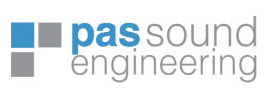Introduction to 100v Public Address Systems
However when we need to distribute sound over a larger area with multiple speakers operating in areas of varying noise levels a problem occurs with this wiring and speaker arrangement which becomes complex and difficult to manage. To present a suitable load impedance to the amplifier, speakers have to be wired in series and parallel arrangements which requires an excessive amount of cable and careful connections. Additionally, it can be difficult to adjust the amount of volume required at any one particular speaker without affecting others, plus the cable length, size and resistance can have a significant bearing on the audio signal on long runs.
To work around this, manufacturers came up with a solution by adopting transformers with multiple power settings for use in each loudspeaker. These transformers also raise the impedance of the speaker to a higher level than the usual 4 or 8 ohms, which allows for simple wiring connections, plus removes the need for large conductor sized cables on long speaker circuits.
The multi-tapped transformers in each speaker also provide a simple wattage adjustment which allows any individual speaker to be adjusted in level without having an impact on any others in that circuit.

This high impedance distribution method solves the problem of series and parallel wiring combinations by allowing simple cable looping of multiple speakers plus the ability to allow a speaker level to be changed up or down by altering the transformer setting. This system is commonly known as the 100v line system in the UK and Europe and 70v in other parts of the world.
100v is a theoretical value based upon the system being driven flat out into a full load with a constant input, in reality this is not a constant voltage, but variable depending upon a number of factors, in reality it is a high impedance system as opposed to a low impedance system (4/8 ohms). So don't be fooled into looking for something that doesn't exist!



